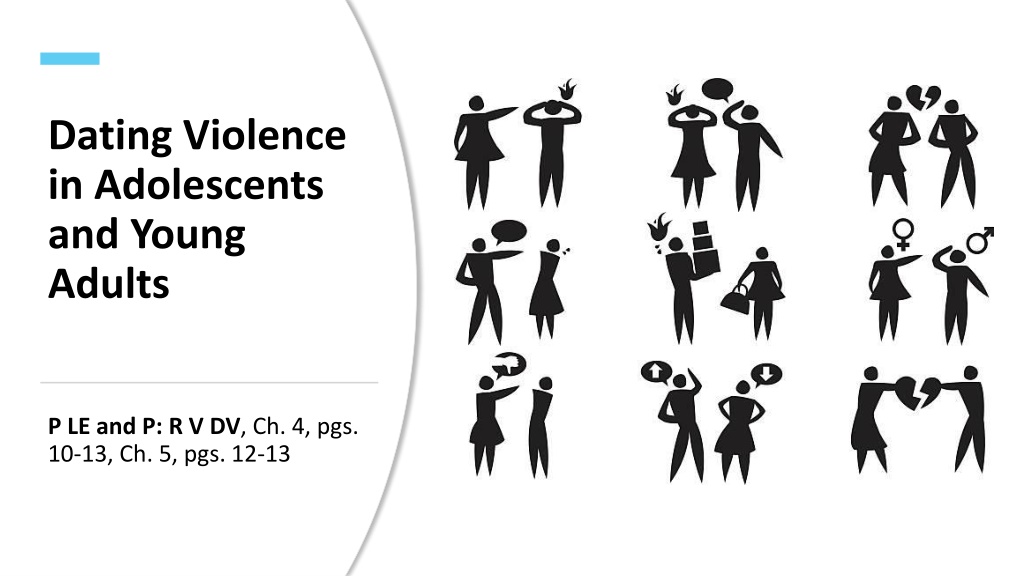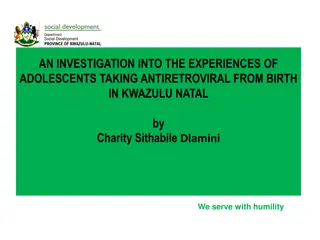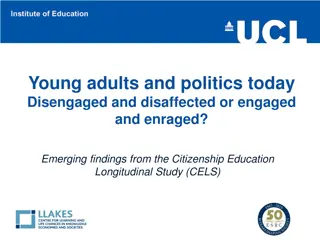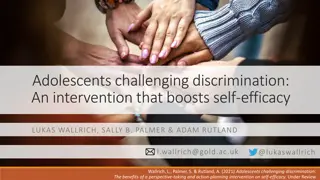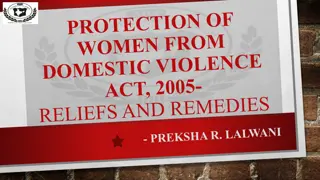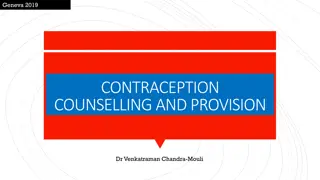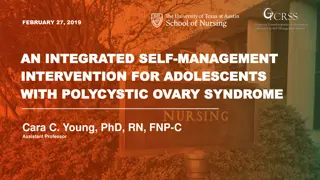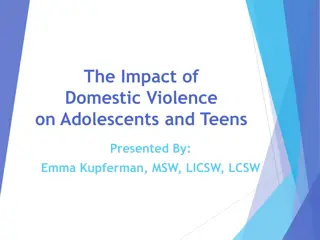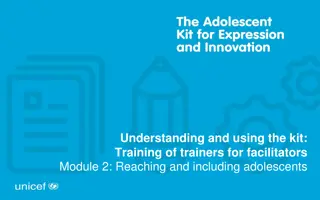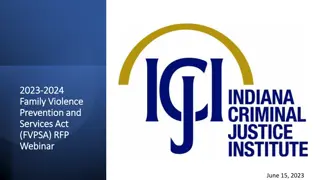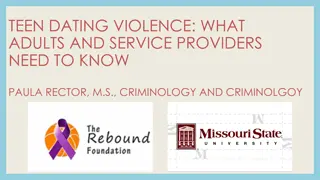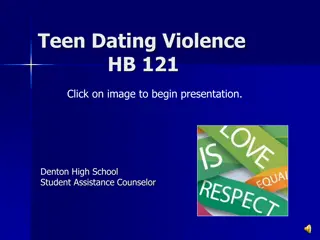Understanding Dating Violence Among Adolescents and Young Adults
This project explores the prevalence, indicators, and barriers related to dating violence in adolescents and young adults. It covers physical, sexual, and psychological abuse, as well as warning signs like physical injuries, emotional changes, and behavioral shifts. Learning objectives include identifying indicators, learning about stalking, and understanding heteronormativity in dating violence situations.
Download Presentation

Please find below an Image/Link to download the presentation.
The content on the website is provided AS IS for your information and personal use only. It may not be sold, licensed, or shared on other websites without obtaining consent from the author. Download presentation by click this link. If you encounter any issues during the download, it is possible that the publisher has removed the file from their server.
E N D
Presentation Transcript
Dating Violence in Adolescents and Young Adults P LE and P: R V DV, Ch. 4, pgs. 10-13, Ch. 5, pgs. 12-13 This project was supported by Grant No. 2019-WE-AX-0009 awarded by the Office on Violence Against Women, U.S. Department of Justice. The opinions, findings, conclusions, and recommendations expressed in this publication/program/exhibition are those of the author(s) and do not necessarily reflect the views of the Department of Justice, Office on Violence Against Women.
Learning Objectives Identify indicators of adolescent and young adult dating violence Learn about stalking in adolescent/young adult dating violence Identify next steps after responding to an adolescent/young adult dating violence situation Learn about heteronormativity in adolescent/young adult dating violence
Prevalence What is Adolescent and Young Adult Violence? Physical Violence and Abuse Sexual Violence and Abuse Stalking Psychological abuse
LGBTQIA+ individuals are incredibly diverse and come from all racial, ethnic and socio- economic backgrounds.
Barriers What prevents adolescent and young adults from reaching out for help: Parents/Family Feelings Stereotypes Perception Loss of independence
Physical Bruises Scratches Burns Pregnancy Appearance Changes Unexplained Illness Indicators What are the warning signs?
Emotional Depression Mood changes Low self-esteem Overly emotional Self-harming Indicators What are the warning signs?
Behavioral Appearance change Falling grades Avoiding friends Habit changes Hypervigilance Substance abuse Indicators What are the warning signs?
Tactics used by those who cause harm How do they use power and control?
Guidance and Consideration A petitioner cannot be denied an order of protection because the petitioner or respondent is a minor. Minors 12 years or older, may receive eight 90-minute sessions of services without parental consent. This Photo by Unknown Author is licensed under CC BY
Address Where to seek support Confidentiality Legal Consideration Self-Advocacy Avoid When a disclosure occurs . . . Judgement Assumptions Belief Systems Rescue Mentality
Documenting Tech Abuse
Safety Planning Alert authorities as needed law enforcement, school administration, etc. Consider changing locks, phone numbers, travel routes, passwords, etc. Block certain telephone numbers Employ the buddy system Tell other trusted adults to keep a watchful eye Request an Order of Protection if needed Seek out resources and support groups in area
DV Protocol Loveisrespect.org Employee Assistance Program The American Bar One Love Foundation Breakthecycle.org NNEDV's Safety Net Teens and Technology https://www.techsafety.org/survivor-toolkit/teens-and- technology Resources
Videos https://www.cbsnews.com/video/teen-dating-violence-a-survivor-shares-her- story/#x https://www.youtube.com/watch?v=8wem8wzU5zw https://www.youtube.com/watch?v=He1pu4VwKdM https://www.youtube.com/watch?v=4JYyHa03x-U This project was supported by Grant No. 2019-WE-AX-0009 awarded by the Office on Violence Against Women, U.S. Department of Justice. The opinions, findings, conclusions, and recommendations expressed in this publication/program/exhibition are those of the author(s) and do not necessarily reflect the views of the Department of Justice, Office on Violence Against Women.
